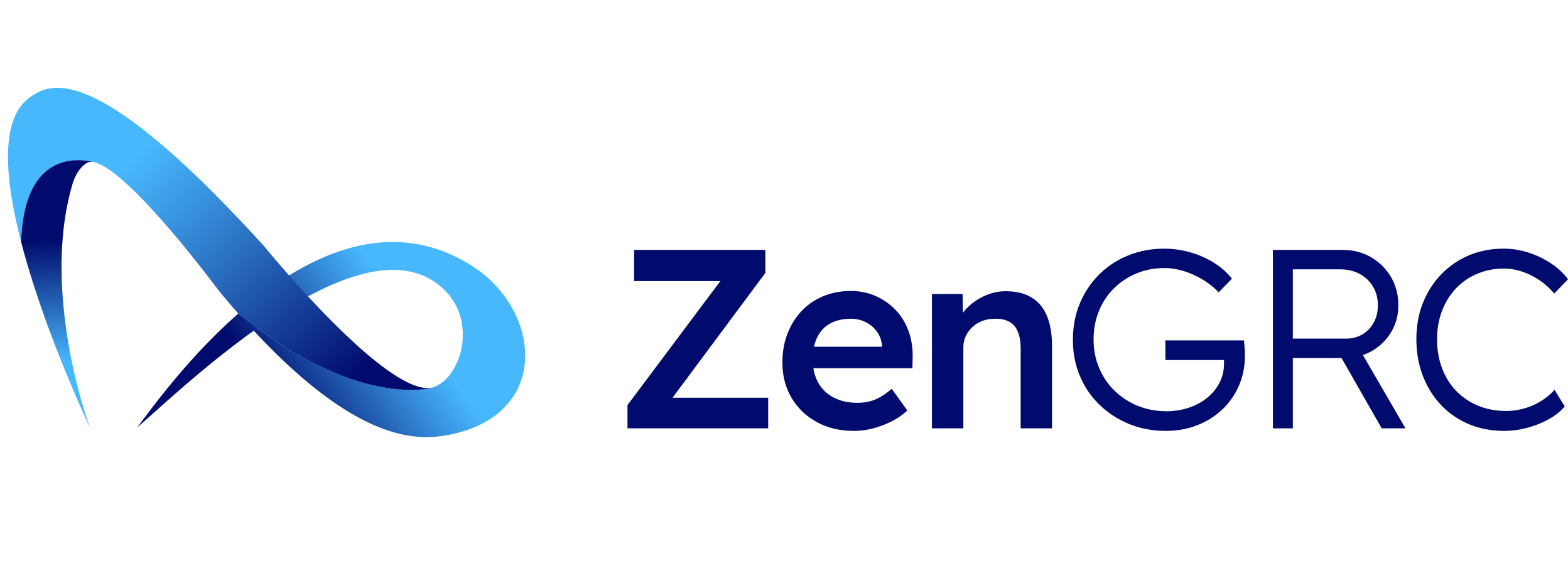
How to Build a Risk Register
Every successful risk management program identifies, analyzes, prioritizes, and mitigates risk events. The process should be repeated at regular intervals to generate data about the threats to business operations, the risk those threats pose, and the steps necessary to reduce risk.
That is an enormous amount of data a company must track. To do so—and to do so smartly—companies can build a risk register.
Understanding the Concept of Risk Registers
A risk register, also called a risk log, is a tool to document and track risks across an organization. It could be a document, spreadsheet, or database that lists each risk and relevant factors.
Building and maintaining a project risk register is integral to the project risk management process. Like many other elements of risk management, it works best when done continuously. Risk registers can help identify, analyze, prioritize, and mitigate risks before they escalate into real challenges for the organization.
The best risk registers clearly lay out every known threat to the business. They include what the risk is, how it could disrupt operations, and what’s being done to prevent or respond to it. In the end, a risk register should give a full picture of each risk and how it’s being handled.
Risk Register Example and Key Elements
While every risk register will vary depending on the organization and the scope of its projects, every risk register template should include several items:
- Risk identification. This could be a name or an identification number to label the risk. Variables such as a date or a subtitle are commonly used to identify each specific risk.
- Risk description. A brief description of the risk helps determine why the risk is a potential threat. A risk description should be short, concise, and provide a high-level overview.
- Risk category. Each risk is assigned to a larger category such as budgetary risks, external risks, security risks, compliance risks, and so forth. This is done by categorizing and evaluating the source of the risk and determining remediation.
- Risk probability. This involves determining the likelihood of each risk happening. Using qualitative measurements, such as “not likely,” “likely,” or “very likely,” can help categorize risk probability. Other, more quantitative measures, such as calculated percentages, can help estimate risk probability.
- Risk analysis. Evaluating the potential effect that each risk might have on the business can help support the severity of the risk.
- Risk mitigation. Also known as a risk response plan, a risk mitigation strategy should include a step-by-step solution to reduce or eliminate the risk, a brief description of the anticipated outcome, and how the risk mitigation plan will affect the potential impact of the risk.
- Risk priority. Establish the priority of the risk, typically by combining the probability of the risk and the risk analysis. One way to do this is to use a simple numerical scale, such as 1 (low), 2 (medium), or 3 (high).
- Risk owner. Each risk must have an owner assigned to ensure that it is mitigated according to plan. Risk ownership should include the person assigned to oversee the risk mitigation plan and any additional team members.
- Risk status. The status of each risk lets people know whether a risk has been successfully mitigated or not. Examples of risk status are “open,” “in progress,” or “closed.”
Risk registers are typically owned by project managers or project stakeholders and all risk information is stored in a single, accessible place. Some companies have external risk management professionals manage the risk register, but it’s usually done by an internal project manager.
The Relation Between Risk Registers and Risk Management
A risk register is a document that guides risk management strategies and the organization’s overall compliance efforts. Whether or not an organization must keep a risk register depends on the industry and relevant regulatory requirements.
Some project management frameworks also require an organization to define a risk management plan. Using a risk register is one way to do that, and it can also show auditors that you have a plan in place to address each risk.
In other words, a risk register serves as a blueprint for your risk management program. It assigns roles and responsibilities, as well as specific action items. It captures the state of risk for the business (or a specific project therein) so everyone knows how to manage risk more efficiently.
Benefits of a Risk Register
One of the biggest benefits of using a risk register is that it enables teams to manage risks more strategically. A risk register can also help focus resources in the areas with the highest risk as well as justify more resources to prevent future risks.
Here are some additional benefits of a Risk Register.
1. Supports Identifying Risk Patterns
Keeping information up-to-date in the risk register allows organizations to identify risk patterns so they can be more prepared to tackle new risks. Put another way, the register helps team leaders predict risks that could harm business in the future.
2. Provides a Common Scale for Risk Measurement
Input from experts in all areas of the organization is necessary to create a successful risk register. This means that everyone needs to agree on a common scale for measuring risks.
Risk can be measured using a qualitative or quantitative scale depending on what makes the most sense for the business. Implementing a uniform measurement scale across the organization will result in more relevant and understandable information across different areas. This will also give stakeholders more tangible data to prioritize risk response activities.
3. Provides More Confidence in Decision-making
Company leaders and stakeholders will have more confidence in decisions made based on data from the risk register. Risk responses plans will be informed by the context of the risk itself. Comparing detailed risk information with enterprise objectives and budgetary guidance will help the company to make better decisions about where to spend and why.
4. Enforces Accountability
A risk register requires project managers to assign a risk owner for each risk.Then risk owners will verify whether the risks are being mitigated according to plan. Team members will check whether certain policies are up-to-date and existing controls are functioning as designed.
Maintaining an up-to-date risk register also enables businesses to produce enterprise-level disclosures for compliance audits, formal reports, or regulatory filings. That in turn helps businesses meet regulatory requirements if the organization’s risk posture is compromised.
A Step-by-Step Guide to Building a Risk Register
There are many templates available online to help you start building your risk register. Whatever structure you choose, the objective of the risk register is always the same: to log information about potential risks. Beware of getting caught up in the details! Only use the fields you feel are necessary to communicate the most information about potential risks to the business or project.
Here are the basic steps to create a risk register.
1. Identify Risks to the Organization
The methods used to identify risks can vary, but the process usually starts with a risk assessment or a risk analysis.
Ask other managers what they think the major risks are. Maybe have a brainstorming session to discuss ideas. Leverage everyone’s expertise to identify potential risks in various areas of the organization.
2. Define the Risks the Enterprise Faces
After identifying the potential risks to the business, write a brief description for each. A risk description can be limited to the essentials, but still include enough information for all team members to understand why the risk is included.
This step helps managers understand how individual risks should be grouped into larger categories. Describing the risk also allows for better decisions on how it should be assigned to risk owners. For example, this step will inform the “Risk Description” and “Risk Categorization” fields in the risk register.
3. Estimate the Probability and Impact of Organizational Risks
It’s important to determine how each risk might affect the business so a strategy to deal with them can be developed. Deciding risk likelihood is a difficult process, and how you do it will largely depend on the risk management methodologies the organization uses. Whichever method you choose, this step will inform the “Risk Probability” and “Risk Analysis” fields in the risk register.
4. Create a Risk Response Plan
Developing a response plan for each risk identified, described, and analyzed assures that it is managed effectively. This step can require a great deal of effort and time from the project team. In the end, the risk response plan should be clear and concise.
It is important to research and perform due diligence on all possible risks. If a risk does occur, the risk owner should be able to go straight into action and follow the risk response plan accordingly. This step will inform the “Risk Mitigation” field in the enterprise risk registry.
5. Prioritize Risks Based on Impact to the Organization
Prioritizing risks helps organizations better evaluate the level of risk compared to others. Risks with the highest likelihood and potential for impact in many areas should be given the highest priority for mitigation and action plan.
Each risk priority can be determined by combining the risk probability and risk analysis measurements from the steps above.
6. Assign Risk Owners for Each Project
Assign a specific owner to each risk identified. Confirm that the people chosen can mitigate the risk and that they know the mitigation plan for that risk. This step will inform the “Risk Owner” field in your risk registry.
Creating a risk register using these steps builds the foundation for a successful risk management plan. Identifying and establishing a mitigating action to new risks can be challenging, but it’s essential. Perfecting the risk registry to the best of your ability can help minimize and remedy risks to the organization.
Assessing Risk Probability and Impact
Effectively managing risk starts with understanding two crucial factors: the probability of a risk occurring (how likely it is to happen) and the impact that risk could have on the organization or project (how severely it would be affected.) Together, these two elements help you determine how much attention and resources each risk needs.
What Is Risk Probability?
Risk probability is to the likelihood that a specific risk will materialize. This can be assessed using qualitative ratings (such as low, medium, or high) or quantitative estimates (like percentages). For example:
- A low probability risk might have a 10% chance of happening, such as an unexpected regulatory change in a stable industry.
- A medium probability risk might be around 40%, like potential delays when working with new suppliers.
- A high probability risk could exceed 70%, for instance, scope creep in a project with frequently changing requirements.
During a SOX compliance review, suppose an internal auditor identifies financial controls that are heavily reliant on manual spreadsheet inputs. If the team is under pressure during quarterly closes, the risk probability of human error or missed reconciliations is medium to high.
What Is Risk Impact?
Risk impact is the consequences on a project if the risk occurs. Like probability, impact can also be rated:
- Low impact might result in minor cost overages or a small shift in the timeline.
- Medium impact could delay one phase of a project or require reallocating resources.
- High impact risks might halt the entire project, derail budgets, or cause reputational damage.
For example, a compliance officer flags a lack of segregation of duties in financial reporting systems. If exploited, this could lead to unauthorized fund transfers. Even though the likelihood is low due to monitoring controls, the impact is high, making this a top-priority risk.
Combining Probability and Impact
Plot the risks on a risk matrix that combines probability and impact to prioritize effectively.
| Low Impact | Medium Impact | High Impact | |
| Low Probability | Monitor | Plan | Mitigate |
| Medium Probability | Plan | Mitigate | Escalate |
| High Probability | Mitigate | Escalate | Act Immediately |
This structure helps you decide whether to monitor, plan, or act immediately on a risk. For example:
- A medium-probability, high-impact risk—such as failure to detect fraud due to internal control weakness—should trigger an immediate mitigation plan.
- A low-probability, medium-impact risk—like a first-time vendor failing a security audit—may only require ongoing monitoring and a corrective action plan.
GRC professionals need to evaluate both the likelihood and the impact of risks. They need to go beyond checking compliance boxes and make smarter decisions. Ignoring either factor can lead to wasted resources on minor issues or worse, a blind spot for major threats that could destabilize the organization.
Risk Breakdown Structure
A risk breakdown structure is a hierarchical representation of risk categories and subcategories that reflect the different sources of project or organizational risk. Think of it as a family tree for risks, starting broad and becoming more specific as you move down each branch.
Teams can identify gaps in coverage by comparing known risks against the full RBS structure and stakeholders see all potential risk categories at a glance.
Key Terms
- Hierarchical representation: Risks are broken down from general categories (e.g., operational, legal, technical) into more granular subcategories (e.g., third-party data handling, regulatory change.)
- Risk sources: The origin or driver of a risk, such as people, processes, technology, or external factors.
- Project risk sources: Specific to project-based environments, these include scope, schedule, resources, or compliance risks.
A compliance team developing a risk register for an international financial institution may use an RBS that includes:
1. Strategic Risks
1.1 Regulatory change (e.g., new AML laws)
1.2 Market volatility
2. Operational Risks
2.1 Third-party vendor management
2.2 Internal process failure
2.3 Business continuity gaps
3. Compliance Risks
3.1 Policy violations
3.2 Incomplete audit trails
3.3 Data privacy and security
Creating and Using a Risk Breakdown Structure
- Identify top-level risk categories relevant to the organization or project (e.g., strategic, compliance, operational, technical).
- Break down each category into more specific risk sources or subcategories based on your industry or internal audit criteria.
- Map identified risks in your risk register to the appropriate RBS nodes.
- Use the structure to group, analyze, and prioritize risks.
Integration with the Risk Register
The risk register and RBS should work hand-in-hand. Each entry in the register can include a field linking it to its RBS category, making reporting and root cause analysis far more effective. For example:
| Risk ID | Description | Probability | Impact | Owner | RBS Category |
| R-103 | Vendor fails to provide encryption certificates | Medium | High | Security Officer | Operational > Third-Party Risk |
Minimize Risks with ZenGRC
Using specially designed tools can make risk identification and mitigation easier and more efficient. ZenGRC is an integrated cybersecurity risk management solution that provides the visibility and actionable insights you need to stay ahead of threats and communicate the impact of risk on high-priority business initiatives. Turn the unknown into quantifiable and actionable risk insights with built-in expertise that identifies and maps risks, threats, and controls for you, so you can spend less time setting up the application and more time using it.
ZenGRC offers a single, real-time view of risk and business context that allows you to communicate to the board and key stakeholders in a way framed around their priorities, keeping your risk posture in sync with the direction the business is moving.
ZenGRC will even automatically notify you of any changes or required actions so you can be on top of your risk posture like never before. Eliminate time-consuming, manual work and streamline collaboration by automating workflows and integrating with your most critical systems.
Plus, ZenGRC integrates seamlessly so you can leverage compliance activities to improve your risk posture. The ZenGRC product suite allows you to see, understand, and take action on IT and cyber risks.
Schedule a consultation today to learn more about how ZenGRC can help your organization mitigate cybersecurity risk and stay ahead of threats.




